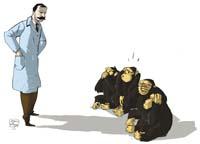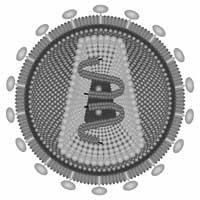Serge Voronoff Rejuvenation Method
2011/09/01 Etxebeste Aduriz, Egoitz - Elhuyar Zientzia Iturria: Elhuyar aldizkaria

Serge Voronoff's lecture concluded with applause. At the 1923 International Congress of Surgeons in London, 700 leading surgeons from around the world applauded Voronoff's work: "rejuvenating" old men. Voronoff's method consisted of inserting testicular fragments of monkeys into texts of old men. And I was having a great success.
At the London congress he taught through several films how he operated. At each table he put the sick and a monkey, one next to the other. The man was local anesthetized and the general to the monkey. The monkey extracted a testicle, cut six small parts and put them into the scrotum of man.
He showed cases of three men before and after the operation. They were 61, 74 and 77 years old men who were aged and in poor condition before the operation. Months after the intervention they looked healthy and strong, riding horses, paddling, etc. Voronoff explained that 44 men over 60 who had already received testicular monkeys transplants were brave and healthy.
Voronoff was of Russian origin, but at 18 he emigrated to France and there he studied medicine. He was a professor of Alexis Carrel and from him he learned transplant techniques. He was not a professor of any kind Carrel would win the Nobel Prize in 1912 for developing blood and organ transplant techniques.
After completing his studies, Voronoff traveled to Egypt in 1896, where he worked as a surgeon for fourteen years. As Time magazine would tell in 1924, local eunuchs aroused their interest: "They had no burrs or moustaches, they had their cheeks fallen and they were obese; they looked quite old, even if they were very young. One of them died at age 45 and seemed to be 90. This showed that the glands in addition to reproduction have other functions; for this they have one fluid and one that gives strength to the muscles and the head." As a result of these observations, he thought testicular transplantation could be a remedy against old age.
He returned to France in 1910 and seven years later began the first animal tests. "I took a ram, 10 to 12 years old, which according to veterinarians could die from time to time. He was so weak that when his legs were lifted they trembled and could not hold his urine. I put in parts of the testicle of a six-month ram. In a couple of months the change occurred. His apathy, his appearance of despair and his sad expression disappeared and vitality and aggressive spirit appeared. Instead of his discontent with the sheep, he showed affection and desire. We put it with a sheep and it was able to be a later one."
Between 1917 and 1926 he performed more than 500 operations with rams, acres and even bulls. And according to Voronoff's observations, by transplanting juvenile testicles into ancient animals, they regained lost strength.
In the case of men he thought he could use the testicles of monkeys. By that time, the idea was brave, as the monkey put on humans. But what's more, Voronoff once wrote: "I dare say that the monkey is above man, in the strength of his body, in the quality of his organs and in the absence of defects affecting the human majority." He then explained: I used the testicles of monkeys, because there were great obstacles to obtaining humans, and because they were only the glands of monkeys, specifically those of anthropoid apes, whose transplants would find in human tissues the same original conditions.
In 1920 he performed his first official transplant with a man. He was 45 years old and had removed the testicles because they were tuberculous. As a result, he had no burrs. "After the transplant he had to start shaving, he had been without it for 20 years." Shortly thereafter he operated on another 74-year-old man. "He returned at eight months. My assistant and I were surprised to see that its thickness fell in half. His appearance was young, his movements were strong. The fat disappeared, the muscles were broken, the body was corrected, and in the head even where before had nothing to die. I was climbing the mountains of Switzerland..."
In the early 1930s more than 500 men and thousands of other men were operated in France worldwide using the Voronoff method. To meet the demand of the monar testicles, Voronoff built his own nursery in Italy. This success allowed him to make a great fortune and occupy the entire first floor of one of the most expensive hotels in Paris, with plenty of waiters.
But over the years, Voronoff's success began to decline and critics with the method grew stronger. The scientific community gradually demonstrated that this method did not actually yield that result. The only thing behind the positive results observed was the placebo effect. As British Doctor Kenneth Walker said, Voronoff's "is no better than witch and spell methods."
Voronoff's career and prestige were buried. He died in 1951 and few newspapers did some necrology. And it was to ridicule for their beliefs, as if they had always tried it.

Gai honi buruzko eduki gehiago
Elhuyarrek garatutako teknologia






